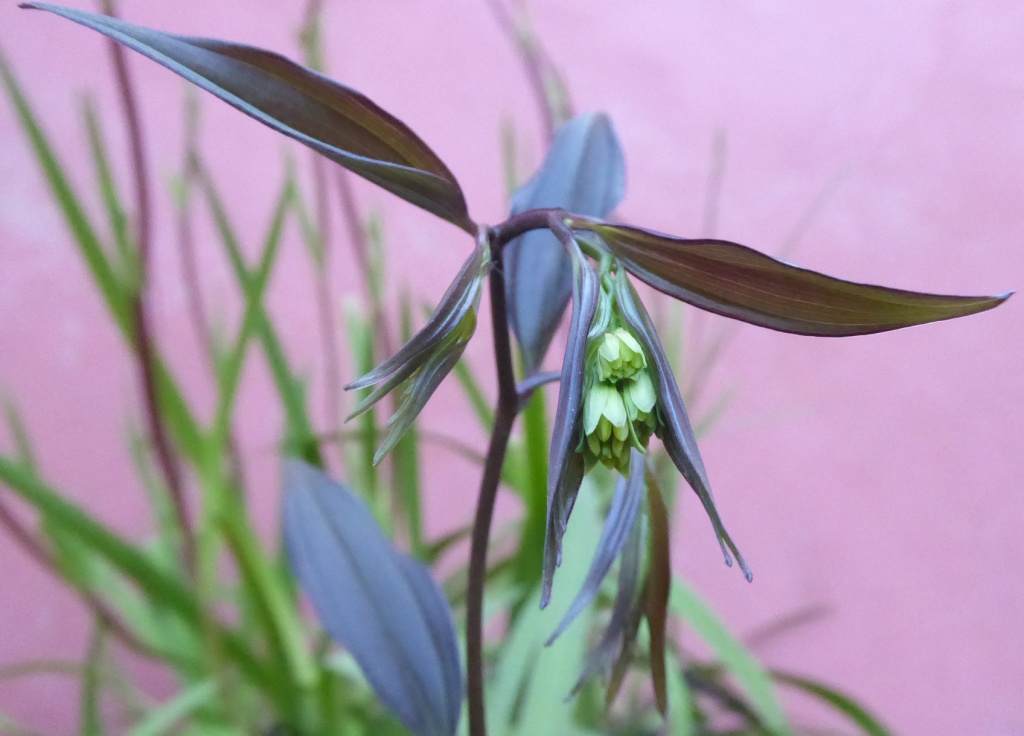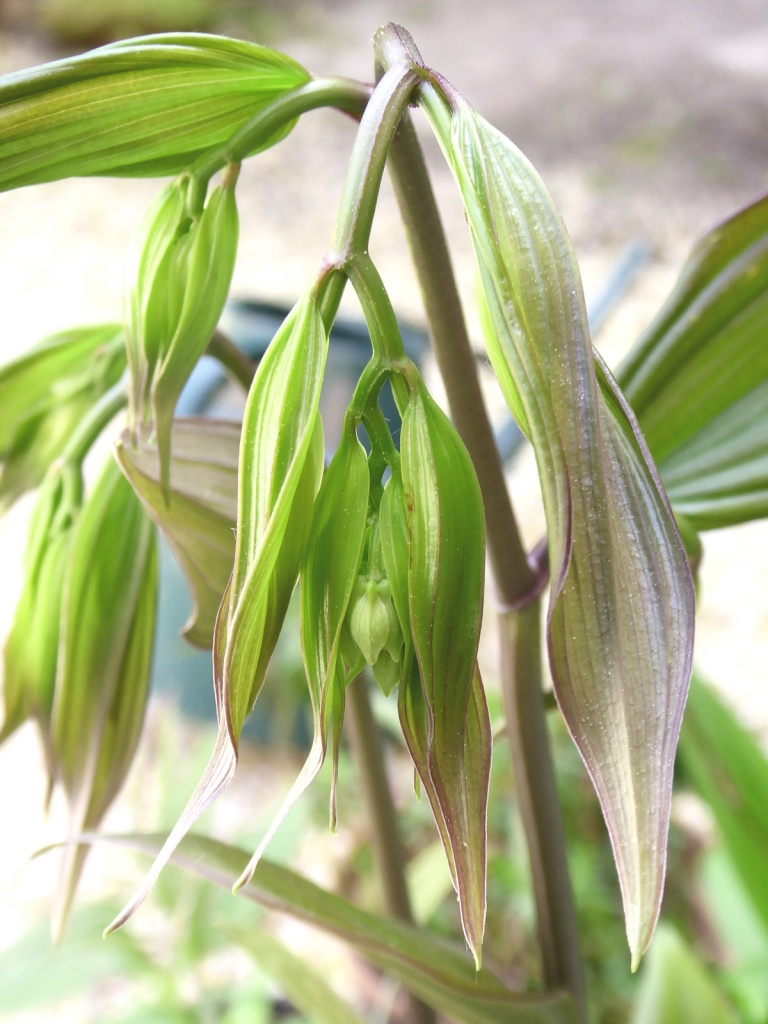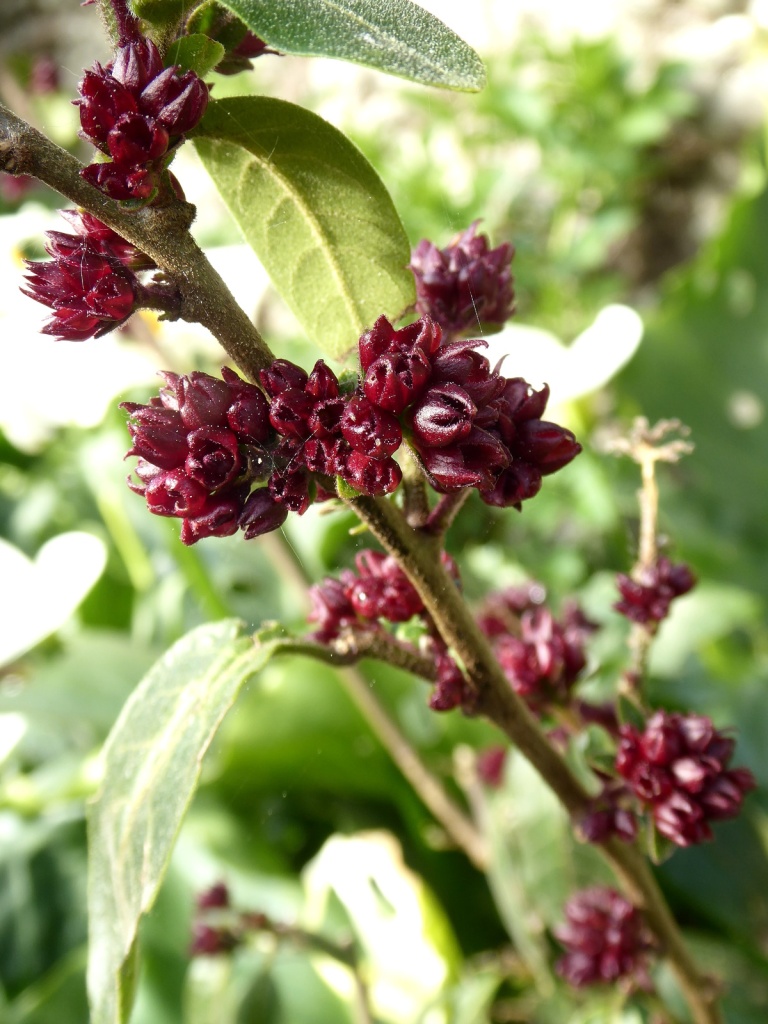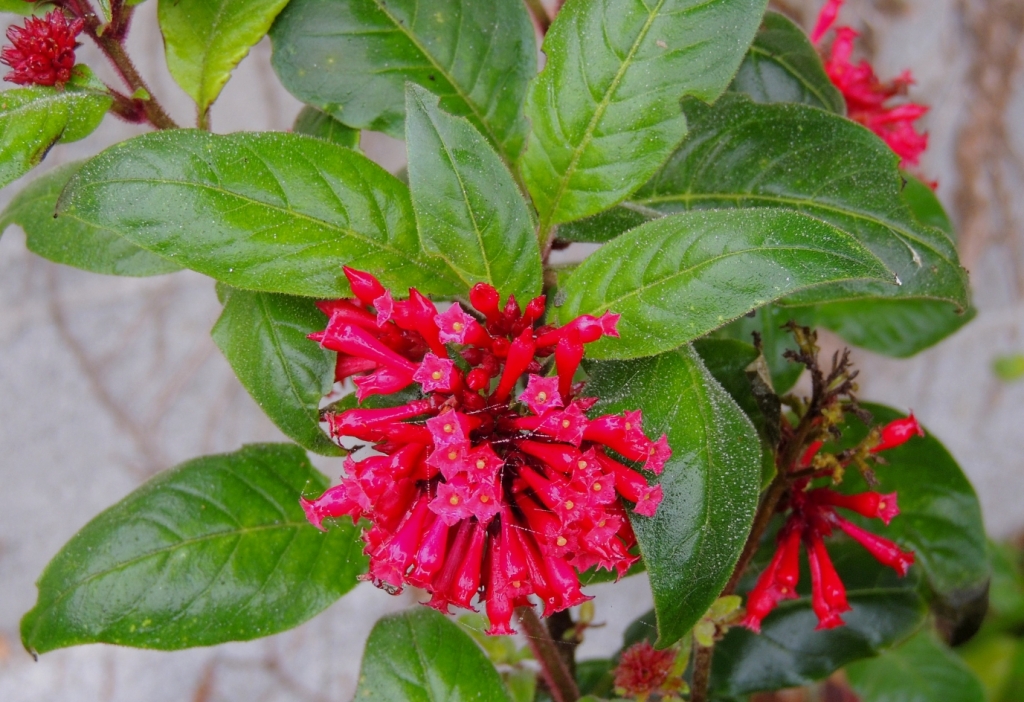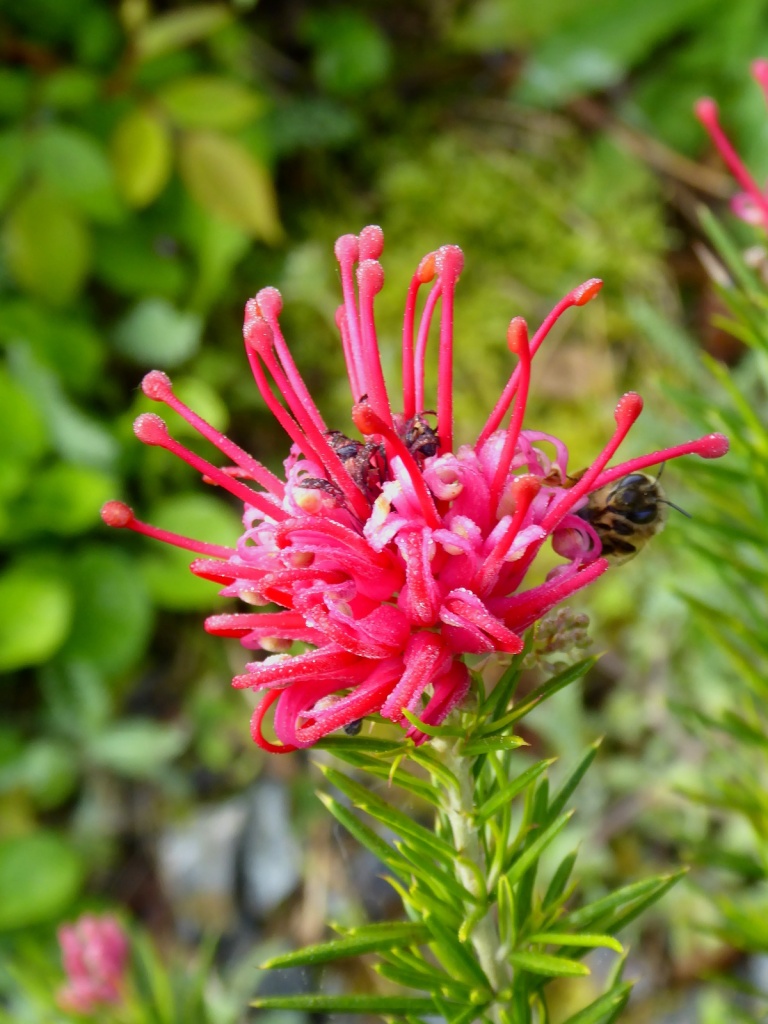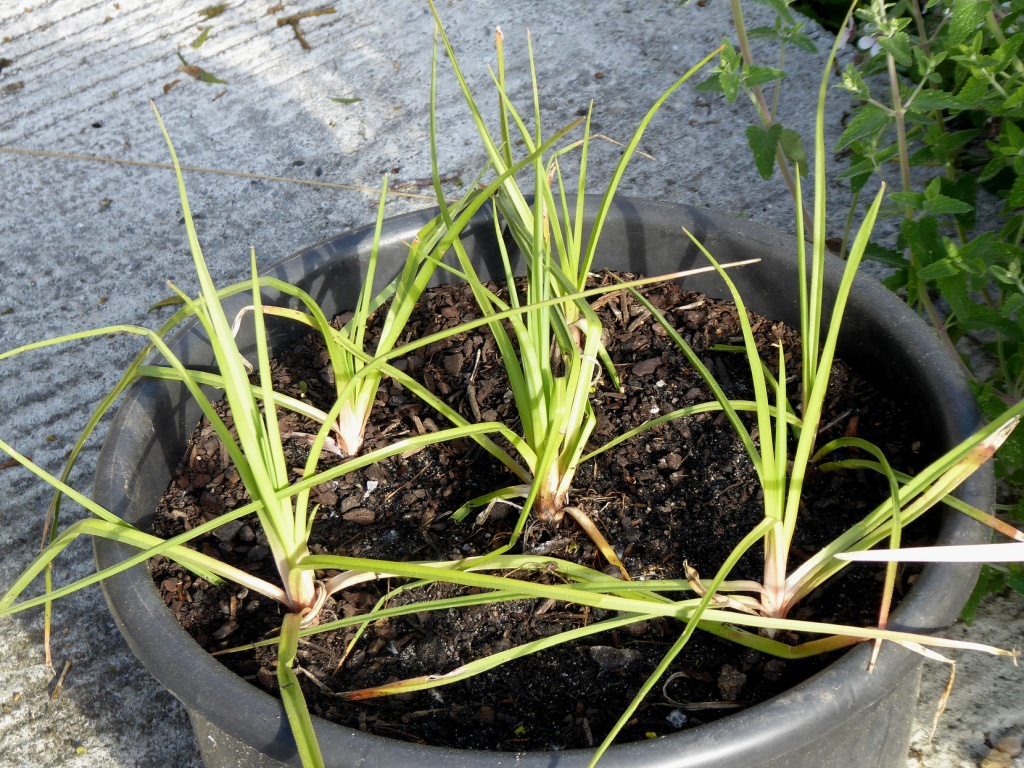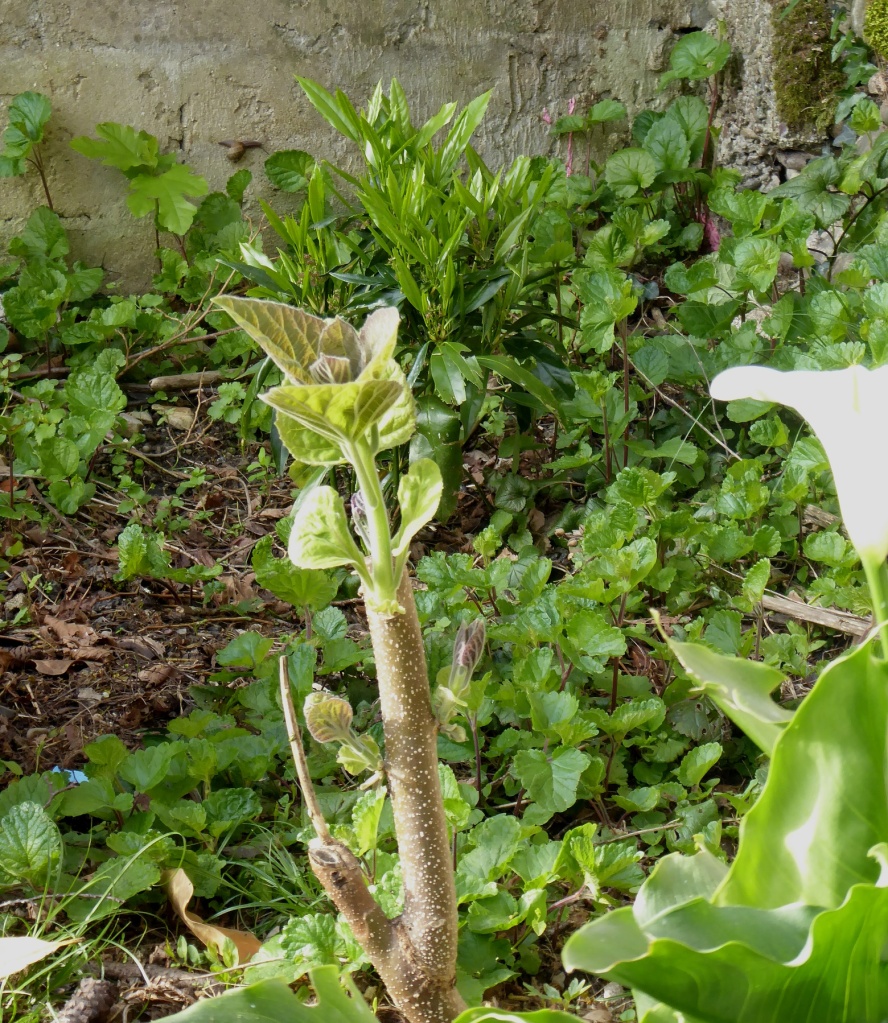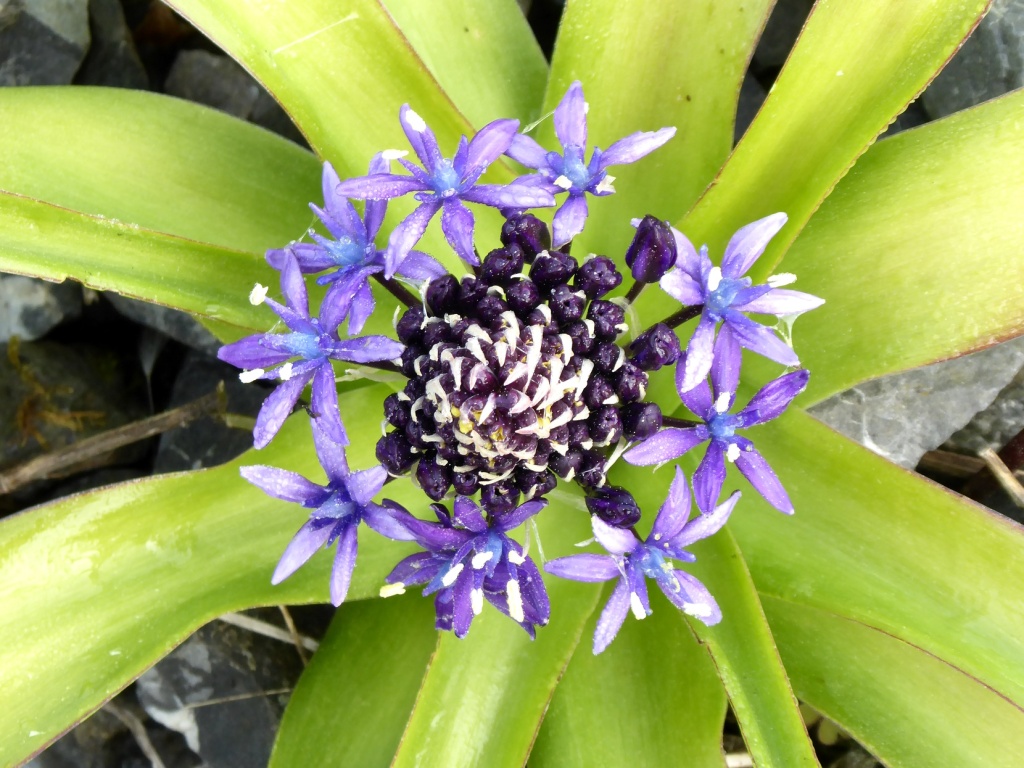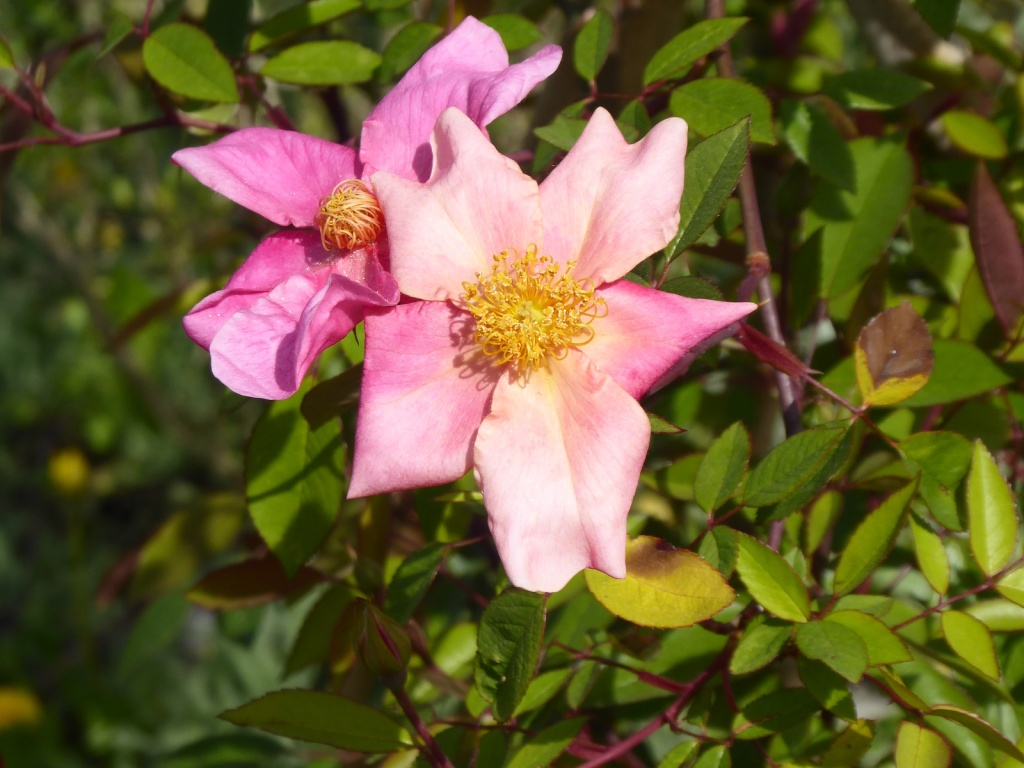
I love a New Year. January may not be the most appealing month weather-wise but the sense of a new start is irresistible to me, and there are just a few things happening in the garden which feed the energy even when the light is low. I had always wanted to grow a Hamamelis, and thought that the Barn Garden could work for it. I bought a baby one, ‘Orange Beauty’, and planted it in. 10 months later and I knew the experiment had hit the rocks- the Barn Garden is far drier than I had thought through too much of the summer and into the autumn, so ‘Orange Beauty’ came out and has been in a pot in the shadier part of the courtyard where human watering does take place. A fair bit of sulking went on, but 2 years later, it is motoring, throwing out long whippy branches (which means a bigger pot) which hold great promise for flowering next Spring. And meantime, on last year’s growth, the orange peel flowers look magnificent.
Below is a little oddity. I was given a tiny bit of this last summer by Bernard Lacrouts of the wonderful nursery at Sanous near old house in 65. He showed me his pretty sizeable plant in his dry border, and suggested I try it as a good bomb-proof plant for tough conditions. I agree with him. This level of glossy green, upright foliage in January is fairly wonderful, and so I recommend Teucrium chamaedrys to you for a sunny, poor soil spot. So far, it is not wandering unlike Teucrium fruticans, which I love but it loves me too much.

All 3 of my, believe it or not, nearly three year old seedlings of Senna artemisoides have come through a frosty period outside without a blemish. The biggest one, below, is now about 8 inches tall, and I live in hope.

Rosa ‘Perle d’Or’ had a difficult start in the garden, having been heavily sat upon by other bigger plants brought down in our July storms. And I wasn’t paying attention. But, in the nick of time, I rescued it and it went into a convalescent pot, from where it has thrown out new shoots and flowers with abandon. It will go back into the garden. I am going to take out the Mirabilis jalapa tubers, and replant them in the front garden next month, and this will make space for ‘Perle d’Or’, Rosa ‘Dainty Bess’, new to me but looks good, and a cutting taken from Rosa ‘La Belle Sultane’. I am trying out a lowish creeping (slowly I hope) Indigofera kirilowii as well around the roses. Always work in progress…

And rethinking and reimagining brings a lot of energy and focus to the garden without even being in it much. So that’s how the New Year is shaping up.





